If you thought the Monarch (Danaus plexippus), was the only royal butterfly of North America you would be wrong. Another royal member, the Queen (Danaus gilippus) is a cousin to the Monarch and adorns many southern gardens with its lovely orange wings.

The Queen is chiefly a tropical species. In the United States, it’s usually confined to the southern regions. It’s quite common in Florida and southern Georgia, as well as in the southern parts of Texas, California, and other states bordering Mexico, including Arizona and New Mexico. Periodically, a stray may be found in the Midwest. Because of climate change, they may even stray farther north as time goes on.
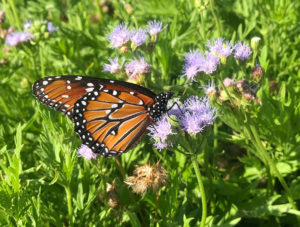
Queens and Monarchs are often mistaken for each other in their various life stages because of their resemblances. But if you look closely, it’s not that hard to tell the difference between Monarchs and Queens.
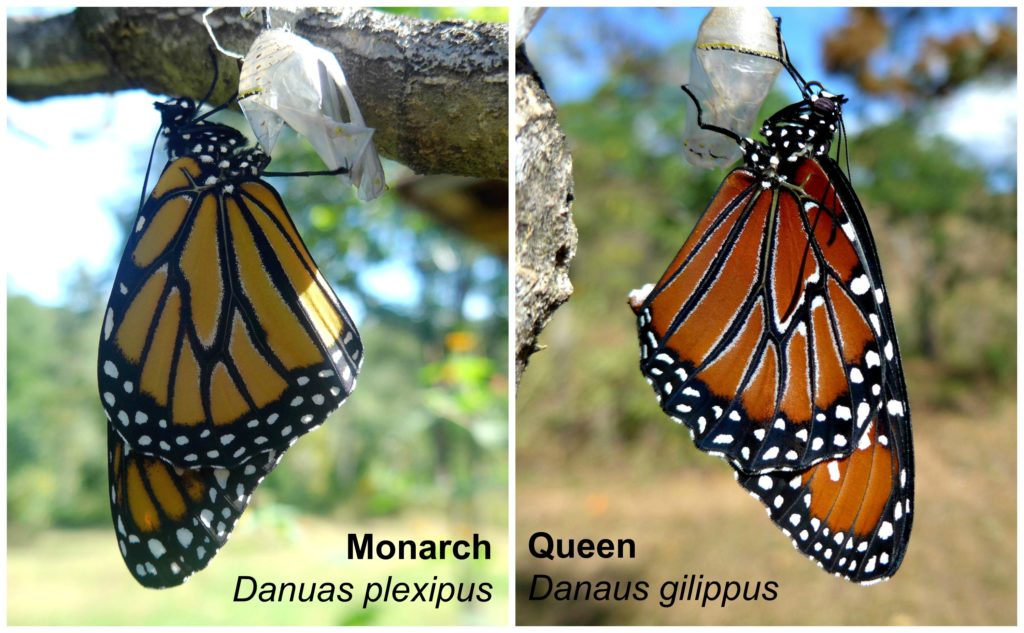
Like the Monarch, caterpillars of the Queen also feed on different species of milkweeds. The larvae of the Queen butterfly have an extra set of filaments the soft horn-like structures on their topside. The Queen caterpillar, similar to the Monarch, has black, yellow, and white stripes, but the pattern varies.

The chrysalis of the Queen is identical to that of the Monarch but is typically smaller. Also, sometimes has a pink hue.

Like male Monarchs, male Queens have a black spot on each hindwing. These black dots are pheromone scales. The Monarch butterflies do not use pheromones during courtship and mating, but Queen butterflies do use them.
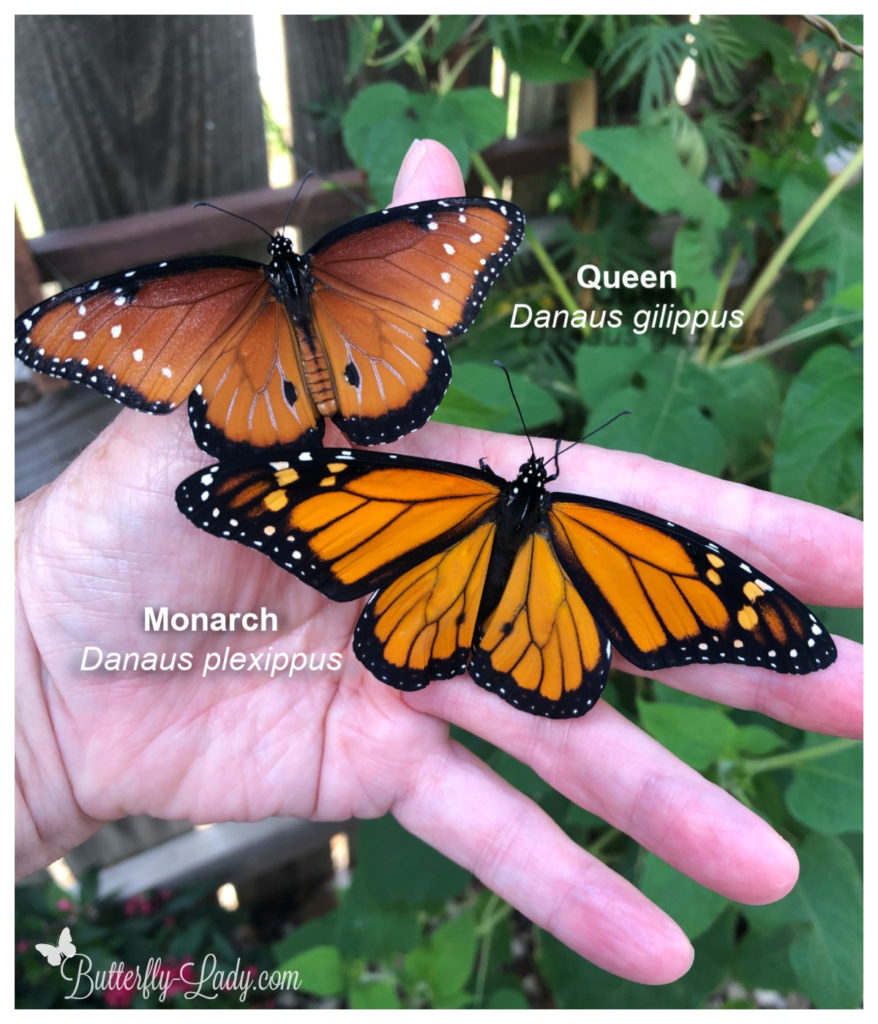
Gregg’s Mistflower produces a natural compound called intermedine, which is a pyrrolizidine alkaloid (PA for short). PA’s occur in many plants and are well known to ranchers, being very poisonous to livestock (and humans) as they serve to protect the plants from grazing. However, it turns out that intermedine isn’t poisonous to queen butterflies, but is essential to their reproduction. When you see queens nectaring on Gregg’s mistflower, over 90% of them are males happily imbibing intermedine with the nectar. Then they convert part of the intermedine to a smaller molecule named danaidone which is a sex attractant pheromone that draws in the females

During mating, the male queen passes the remaining unchanged intermedine to the female as a “nuptial gift” that once again manifests itself as a toxin, this time rendering her eggs unpalatable to predators! Thus, as the butterfly pollinates the flower, the flower provides a molecule that in two ways enables the butterfly to reproduce!” “Gregg Mistflower, the Queen Butterfly, and the Nuptial Gift” by by Ray Conrow, Native Plant Society of Texas. https://npsot.org/posts/gregg-mistflower-the-queen-butterfly-and-the-nuptial-gift/
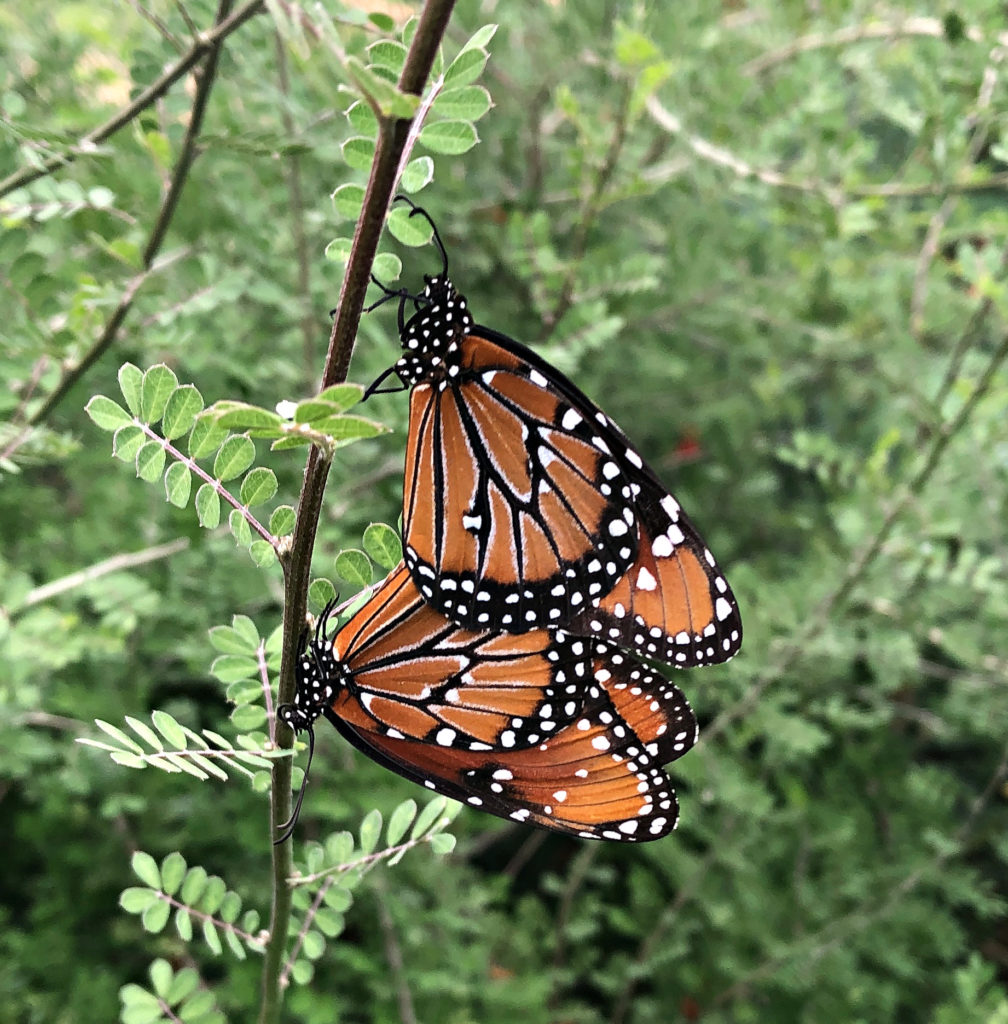
The Soldier Butterfly (Danaus eresimus) is a striking species found across North, Central, and South America. It closely resembles the Monarch and Queen butterflies but has a dark reddish-brown coloration with subtle black veining and occasional white spots on its forewings. And like both the monarch and queen butterflies, the caterpillars feed on milkweeds.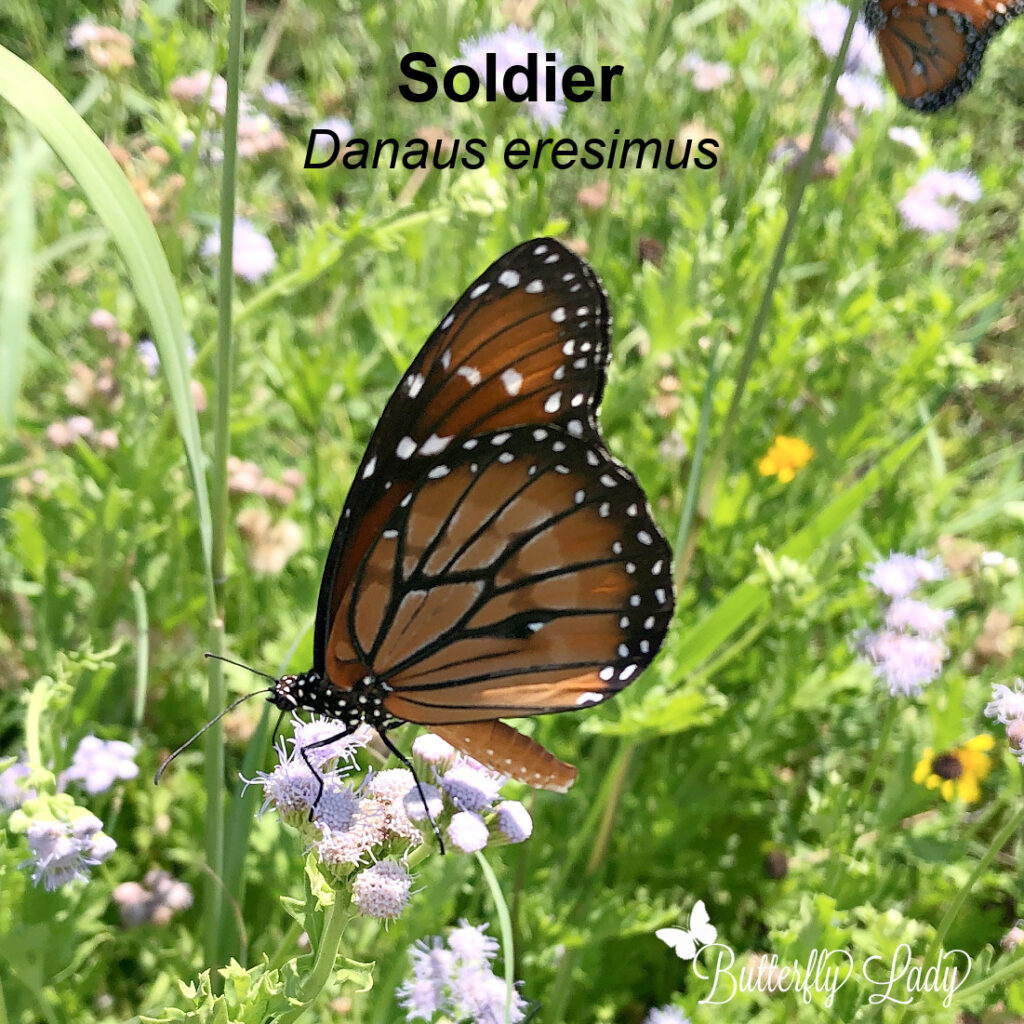
These butterflies use aposematic coloration to warn predators of their toxicity They all eat milkweed which contains cardiac glycosides that are toxic and help protect them from predators. (Infographic created by nationalbutterflycenter.org)

Plant Gregg’s mistflower in you garden if you want to attract Queen butterflies (and monarchs)!

